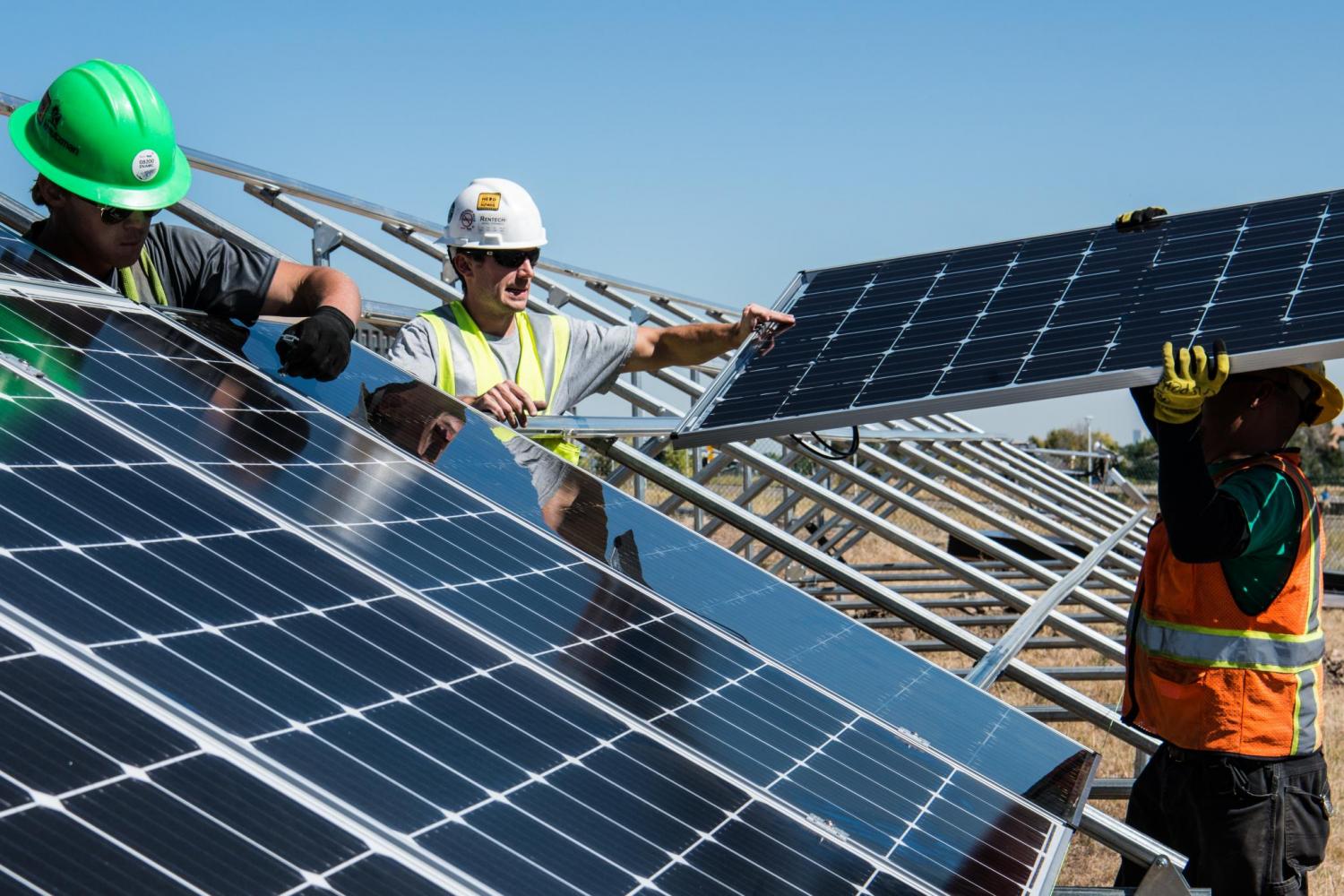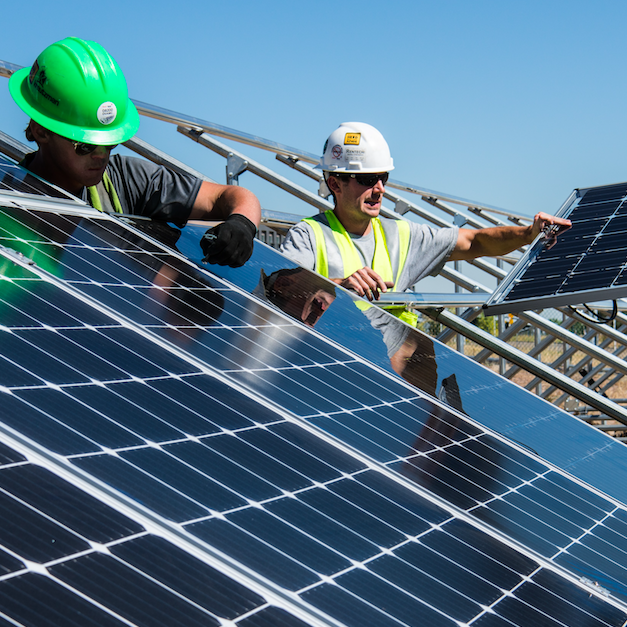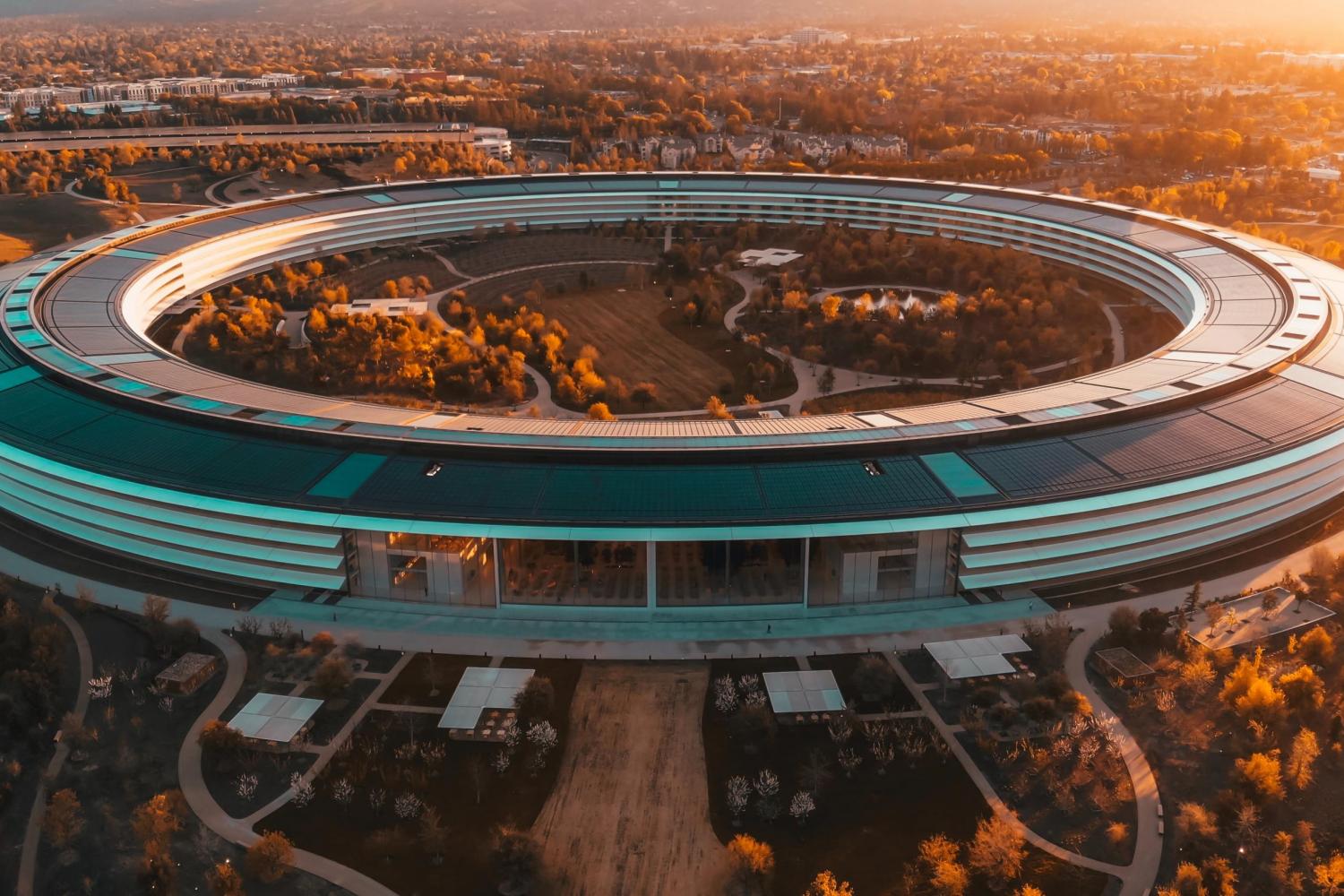Why Data is So Important for Sustainable Buildings to Thrive


It’s no secret that buildings produce a massive amount of carbon emissions. In 2018, commercial and residential buildings accounted for approximately 40 percent of total U.S. energy consumption. While this issue persists, it’s important to take action and identify ways we can achieve carbon neutrality to mitigate building-related carbon emissions. In fact, over 70 cities across the world have accepted the challenge to become completely carbon neutral by 2050.
For sustainable buildings, compliance and data go hand-in-hand
To comply with local laws in states and municipalities across the United States, real estate developers, owners, and property managers are adopting practices that keep in line with this trend. It’s imperative to keep building operations efficient while implementing cost-effective, yet impactful upgrades that reduce building emissions. With real-time energy management, managing a property and achieving sustainability goals doesn’t have to be so overwhelming.
Through the use of an ongoing energy management service, operations and maintenance staff can leverage data to identify opportunities that can reduce energy waste and maximize the performance of each piece of equipment. Many successful building operators of newly constructed and older buildings depend on the use of state-of-the-art data analysis and expert technical support to turn that data into action. Without this, building operators may simply waste time and money on equipment that doesn’t run properly. An ongoing, real-time energy management service can help buildings meet their sustainability goals by:
Three keys for optimizing the performance of sustainable buildings
Optimizing All Equipment. To ensure optimal equipment efficiency, it’s important to know a building’s equipment schedule. Fans, valves, and compressors could be operating 24/7, even when a building is closed, or the space is not in use. It’s important for building managers to re-program and evaluate equipment based on the goals of the spaces they serve. Not only does unnecessarily running equipment waste energy, but it also decreases the life of the equipment – leading to more money spent in the long-run.
The good news is that equipment optimization is easy to do when the systems are connected to a building management system (BMS) and an expert is analyzing the data in real time. For example, if an office space is closed from 10 pm to 7 am, it would be wise to create a schedule on the BMS that would shut off air handler units during those hours. An expert would then monitor the data after the change to ensure the new schedule had the desired effect.
Strengthening Building Performance. To increase the overall performance of a building and achieve peak efficiency, we must understand each building’s specific needs. Instead of overriding equipment into manual operations at the first sight of a miniscule problem or a complaint, a plan should be implemented by the operations team. Having a plan in place, especially if there is site team turnover or new equipment that requires training to operate, is crucial to ensuring effective systems-level operation.
And when an urgent issue does arise, the plan will provide clear instructions on how to respond, allowing the building operator to quickly solve the problem with confidence, or know whom to contact from their energy management team for guidance. This type of plan can be created with guidance from an energy management professional who understands the goals of the building, the needs of its occupants, and the sustainability goals of the building owner.
Streamlining Operations. When it comes to implementing a BMS to enable more effective real-time energy management, it’s important for all staff members to be trained quickly and effectively for optimal efficiency. After all, a piece of equipment is only effective if you know how to properly use it! Training could include shedding light on how to holistically navigate the system, how to change set points and manage schedules, the importance of moving away from changing set points locally on each piece of equipment to changing set points in the BMS, and explaining how each of the systems interact.
Perhaps the most essential piece of training is to explain why. By articulating the impact on cost, equipment function, and ease of management for the team, the message will mean more than instructions in a manual. The team will understand the influence of their actions and how they affect the entire building and its occupants.
With the increase of emerging laws and regulations, we’re seeing more of a global commitment to achieve carbon neutrality. In order to do so, we must take the necessary steps to keep our buildings sustainable. Real-time energy management has a myriad of benefits, allowing a building to ensure optimal systems performance, reduce operating costs, and improve occupant comfort – all while making the world a better place!
Written by Samantha Pearce, Director of Energy Management Services at Bright Power and Kevin Connolly, Energy Engineer at Bright Power.
Image credit: Scott Webb/Pexels
Yes, E-Bikes Are Cool with a Purpose


I like bicycling. I hate steep hills. That describes why most of us don’t ride bikes. Too often it feels more like work than fun. We definitely don’t ride them to work. Who wants to show up all hot and sweaty? That perspective was radically changed during my first e-bike ride.
The experience on that e-bike was pure fun – just as other TriplePundit writers have experienced over the years. The ride was on east San Diego’s hilly dirt trails. I had ridden these trails before on my mountain bike. That experienced ended with a sense of winning an athletic battle. I finished sweaty, tired and proud.
My e-bike ride left me laughing in wonder over how much clean technology can enhance the human experience. I soared up rock strewn hills like an Olympian. At the end of my 30-minute ride I was neither sweaty nor tired. I felt exhilarated. I could have walked into a business meeting with energy and without sweaty embarrassment.
The basics about e-bikes
There are two basic types of e-bikes. Class 1 and 3 e-bikes have electric motors that assist in pedaling. They typically have a 20 miles per hour top speed- about how fast I go when riding my traditional mountain bike down a city street hill.
Class 2 e-bikes are more like motorized vehicles. They have throttles. The riding experience is more like being on a scooter than a bicycle.
My test ride was on a class 1 e-bike. It had pedals and mechanical gears like my mountain bike. It also had a battery/electric drive system that assists in pedaling. A rider has the option of pushing a handlebar button to select pedaling assistance levels or the rider can put the electric system into automatic and let the bike manage pedal assistance. I liked the added fun of selecting assistance levels, but the automatic system worked great and allows the rider to just relax and pedal.
An e-bike cultural revolution is underway
E-bikes are driving a bicycling cultural revolution. Bicycling purists (like I was before riding an e-bike) look at e-bikes as cheating.
E-bike enthusiasts view them as a technology innovation that could dramatically increase the number of people exercising with zero emissions.
Our local and national governments are attempting to bridge this cultural divide. Today, most cities are allowing non-throttle e-bikes to use bike lanes. They are all over San Diego’s coastal bike lanes, mostly ridden by tourists grinning from ear to ear over the fun and ocean views.
Riding e-bikes in our national parks and forest lands is still a work in progress. Up until recently they were classified as motorized vehicles and were limited to roads/trails that permitted motorized vehicles. The Trump Administration recently eased these rules to allow e-bikes limited to 20 miles per hour on any U.S. national park trails.
But the process of where e-bikes can be ridden is still an evolving governmental question that requires riders to check the rules for their city or parkland.
Barriers to e-bike commuting
E-bikes could be a huge zero-emissions urban transportation solution if it were not for the lack of protected bike lanes.
I am proud that my hometown of Oceanside has begun the process of converting the four lane Coastal Highway into two lanes with two protected bike lanes. Reaching this decision required often contentious public input. Merchants were fearful of losing sales. Commuters feared traffic gridlock.
The ultimate decision to create protected bike lanes was driven by issues of safety and economic growth. The community galvanized around bike lane safety after a child riding a bike was hit by a car and killed. The community recognized that this tragedy was preventable and would happen again if bicyclists were not protected.
The quest for sustainable economic growth was the other decision driver. There is now a solid body of case studies documenting the economic growth gained by communities with biking and walking access. The economic bottom line is that protected bike lanes and high walkability attracts urban citizens and retail visitors. This leads to increased retail sales, tax revenues and property values.
Unfortunately, creating protected bike lanes is still more an urban experiment than urban design. For example, while Oceanside is building protected bike lanes on the Pacific Coast Highway (PCH), it has no citywide plan for protected bicycling. Riding my e-bike the four miles west to the PCH requires taking my life into my own hands by riding through highly congested intersections without protected bicycling lanes. This means the only safe way for me to ride my e-bike on the PCH is to load it into my SUV (electric hybrid!) and drive there for a ride.
Sustainable mobility is within our grasp
Like electric vehicles, e-bikes have opened the technology door to a sustainable future delivering economic growth along with enhanced human and environmental health. Economics is no longer a barrier. While clean technology can have a higher acquisition cost, it can win on long-term cost competitiveness.
The issue is us. Sustainability is within our grasp. We just have to buy it and vote for it.
Image credit: Pedego Electric Bikes/Facebook
Want to Remain Competitive? Go Carbon Neutral This Decade


A company that does not address climate change faces numerous, severe risks, sustainability experts warn in a new joint survey from GlobeScan and SustainAbility. Only 2 percent of the 554 respondents from 66 countries predicted “no negative financial consequences for companies that fail to act on climate.” The solution? A plan to go carbon neutral by 2030 — if not sooner.
Nearly half of the experts warned that companies failing to move toward carbon neutrality in the next decade would see their reputations suffer. A third of respondents moved that deadline up to 2025. Another third of surveyed experts predicted climate impacts would lead to greater vulnerability of financial and physical elements.
The third installment of the bi-annual report, initiated in 2015 alongside the Paris Climate Agreement, wasn’t all doom and gloom, though. The experts shone a spotlight on several early corporate climate leaders: Unilever (22 percent), Patagonia (15 percent), Tesla (11 percent), Ikea (10 percent) and Alphabet (the parent company of Google, with 6 percent) were the top votes.
The 5 most effective climate adaptation strategies
The joint GlobeScan and SustainAbility survey crowdsourced experts’ most valuable suggestions for how to adapt to climate change. When prompted to evaluate several strategies for climate change adaptation, the experts identified several tactics which would provide immense value to corporations’ intent on going carbon neutral:
- The study found that 69 percent of surveyed experts believe enhancing supply chain resilience is a critical strategy for climate change adaptation.
- Becoming an advocate for policies which foster climate change adaptation was suggested as an effective tactic by 63 percent of experts.
- A similar 63 percent of experts also voted for conducting an organization-wide assessment of physical risks, being sure to account for different scenarios of greenhouse gas emissions.
- Public infrastructure garnered the attention of 61 percent of experts, who advocated for greater resilience.
- Slightly less than half (44 percent) of the experts touted more funding for at-risk populations as a worthwhile adaptation strategy.
Of note, 2019 was the first time in the report’s history that science-based targets enjoyed greater support from respondents, up to 77 percent from the 66 percent recorded in both 2015 and 2017.
A call to corporate climate action
The overall sentiment expressed by experts was that current progress is not enough to avoid irreversible climate change. In 2019:
- 49 percent of experts stated that it was unlikely we would avoid “major, irreversible damage to human, social, and ecosystem health.”
- A further 16 percent voted that damage had already occurred.
- 15 percent of experts remained neutral on the subject.
- Only 16 percent were optimistic about our odds of innovating quickly enough to avoid major damage.
- And, 4 percent abstained from issuing predictions on the matter.
Business leaders interviewed for the press surrounding the survey’s publication tended to agree with the bleak outlook held by a majority of experts, though they also saw the challenges as opportunities to rise to the occasion.
The business case for going carbon neutral
SustainAbility Executive Director Mark Lee summed up the survey as “a reminder that current action, while certifiably representing progress, is not enough to stave off major damage from climate change.” He encouraged corporations to “take immediate and rapid steps towards a low-carbon future.”
Mike Gerbis, the CEO of GLOBE Series and The Delphi Group, called for greater ambition. He found it “inspiring to be among so many of the companies and individuals who are at the vanguard of sustainability and climate leadership,” adding that he and his colleagues “look forward to accelerating our collective impact over the next decade.”
GlobeScan Director Eric Whan agreed with their sense of urgency, adding that, “The pressure is on for 2020, and experts are pointing fingers at both good and bad.”
For corporations who value their reputations, their bottom line, or–at the most basic level–their ability to live on this planet, this is the decade of climate action.
Image credit: Pexels
A New Fashion Statement from Nike: Zero Carbon, Zero Waste


At this year’s summer Olympics in Tokyo, three countries will sport Nike threads inspired by circular design. Brazil, France and Team USA’s skateboarding teams will all wear uniforms made of 100 percent recycled polyester.
The Olympics move is “a moment for us to telegraph our intentions as a company,” said John Hoke, Nike’s chief design officer. The company’s intent to “protect the future of sport” is manifested by its greater Move to Zero campaign.
Move to Zero is a major investment for Nike, but the benefits are real to the world, athletes and the company.
Climate change endangers the future of sports
Nike quoted famed runner Joan Samuelson in its “Climate and Sport” feature as saying, “When I’m out running I feel like I’m an environmental barometer for climate change.” Through its Breaking2 project, Nike found a correlation between hotter temperatures and slower race times, and noted that the “fastest race times" are run in temperatures around 50 degrees Fahrenheit (10 degrees Celsius).
Beyond extended marathon times, the company’s efforts are sparked by concern that snow sports will see the “literal loss of playing field” by 2050, with an estimated 11 percent to 22 percent loss of “quality snowboarding days around the world.” Turf sports will see a decrease in “time spent on the field by up to two months in parts of Louisiana, Texas and Mississippi.”
5 keys to Nike’s move to zero carbon and waste
In response to ongoing threats to global sports from climate change and environmental contamination, Nike says it is working both to minimize its environmental footprint and maximize brand impact.
Hoke noted that the fashion industry is currently undergoing a “zeitgeist shift.” He explained Nike’s intention to be a leader, stating, “And it’s not a time to be timid — it’s a time to be bold, to dream big and to take action.”
The Move to Zero campaign comes in addition to efforts such as eliminating single-use plastics across its global campuses. Among Nike’s many ambitions, the company plans to:
- Power its owned facilities with 100 percent renewable energy by 2025.
- By 2030, reduce its carbon emissions across its global supply chain by 30 percent.
- Diverts 99 percent of all waste associated with footwear manufacturing from landfills.
- Diverts over 1 billion plastic bottles a year from landfills, repurposing them into both uppers for Flyknit sneakers and jerseys.
- Turn waste into new athletics spaces through the Reuse-A-Shoe and Nike Grind programs.
Seana Hannah, Nike’s vice president of sustainable innovation, didn’t gloss over the fact that the company is “using all the recycled materials that are available to us.” But the true focus of her statement was that Nike is “using renewable energy, or the lowest energy methods possible,” in all of its manufacturing processes.
New clothes for a new world
Specific circular design elements of new Nike products include:
- 100 percent recycled polyester plain weaves in Sportswear Windrunner jackets, with the jacket’s drawcords and zippers made from Nike Grind, a blend of recovered textiles, leather, foam and rubber.
- The company claims at least 60 percent organic and recycled fabrics will make up the Nike Sportswear shorts, T-shirts, full-zip hoodies, crews and joggers.
- Women’s shorts, crew and dress wear in the Move to Zero collection will “feature a mix of at least 60 percent organic and recycled fabrics.”

Nike's new Space Hippie footwear collection is “about figuring out how to make the most with the least material, the least energy and the least carbon,” Hoke said. Environmental impact dictated every aspect of the shoes’ designs, from material to packaging:
- The yarn going into the shoe is made from 100 percent recycled material.
- The shoe’s cushion manufacturing produces “about half the [carbon equivalent] as typical Nike foams,” thanks to repurposing of factory scraps from another line of performance running shoes.
While Nike isn’t claiming to go 100 percent circular or carbon zero in the near term, Hannah says the company does “believe the future for product will be circular.”
Image credits: Nike
Companies Still Failing to Meet Zero-Deforestation Goals, Watchdog Says


Global Canopy is an environmental nonprofit that targets the market forces driving two-thirds of tropical deforestation worldwide — and it has some disappointing news. The group’s annual Forest 500 report indicates that most companies are failing to address tropical deforestation along their supply chains – despite high-profile zero-deforestation commitments.
“Despite some companies setting strong commitments, deforestation rates have actually increased,” Sarah Rogerson, a researcher at Global Canopy and author of the report, told TriplePundit. “Companies with commitments are let down by a lack of action by their suppliers or peers continuing to drive deforestation.”
Public commitments sorely lacking across the global business community, nonprofit says
Of the leading 500 companies trading and financing the top commodities connected to tropical deforestation, 242 have yet to make any public commitments, according to the report. This includes some big-name brands, such as the retailers Amazon and TJ Maxx, food giant Tyson Foods, and luggage manufacturer Samsonite.
Of the companies that have made public commitments, action is often lacking. Global Canopy found that some companies have even removed or weakened their commitments, such as Burger King, whose palm oil commitment now only applies to the United States. Another 100 companies do not report on implementation or progress, making it difficult to access if the commitment has resulted in any actual change, according to the report.
In reality, the findings are not too surprising, as last year saw two tropical forest disasters that can be directly connected to global supply chains.
Deforestation wreaking havoc on communities, the environment and the global economy
First, fires in Indonesia charred an estimated 1.6 million hectares. Greenpeace connected several of the fires to palm oil plantations supplying some of the world’s largest food and consumer packaged goods companies. This is nothing new, as palm oil is a crop that has long been connected to deforestation, biodiversity loss and labor violations.
Then came an even worse catastrophe: Massive fires in the world’s largest rainforest, the Amazon, burned an astounding 12 million hectares. This time environmental watchdogs traced the fires to commodities including beef and soy, with the U.S. financial firm BlackRock facing particular scrutiny for its role as an investor in several forest-clearing companies. The nonprofit Amazon Watch linked a slew of corporate supply chains to the fires, from sectors such as banking, retail and food.
“Corporations are ignoring what is going on in the Amazon,” said Moira Birss, campaign director of the finance program at Amazon Watch. There is some hope, however, in BlackRock’s recent move to put climate at the center of some of its investments.
Here’s the problem: Blackrock’s recent moves sound good and generated a lot of positive press, but how impactful will they really be? The core issue that Global Canopy has identified is that voluntary commitments are just not working, as it is too easy for companies to back out at any time, quietly change their goals, or just fail behind the scenes.
Fixing that will take time, but the first step is more transparency, Rogerson says.
“As a minimum, we want companies to acknowledge their role in driving demand for commodities causing deforestation, and set a commitment to eliminate the deforestation associated with the products they produce or use,” Rogerson told 3p. “These commitments should be public, ambitious, and must be implemented and reported against transparently.”
The nonprofit is also calling for due-diligence legislation that would require companies to assess, prevent, mitigate and report on deforestation risks in their supply chains. Such legislation is now under consideration in the European Union.
“Legislative action would require the laggard companies to act on deforestation,” Rogerson explained. “Leading companies should back this as it would increase demand for deforestation-free commodities, making it easier for companies to meet their own commitments.”
We’re at a point where legal repercussions for companies that fail to address deforestation along their supply chains might be the only way forward. The 2019 Indonesia and Amazon fires had a massive impact on people, planet and biodiversity – and showed clearly the high cost of business as usual. There needs to be change, and fast.
Image credit: Felipe Dias/Unsplash
The Rapid Decline of Bumble Bees Threatens U.S. Agriculture


A recently released study found that climate change may cause bumble bees in North America and Europe to become extinct. Researchers analyzed the data collected from 1900 to 2015 on 66 bumble bee species in North America and Europe. What they discovered is that in just one human generation, the likelihood of a bumble bee population surviving in a given place has declined by an average of over 30 percent.
This decline in bumble bees is occurring rapidly in both North America and Europe. The study links the decline of bumble bees to climate change, which increases the frequency of higher temperatures occurring that exceed what bumble bees can tolerate. “Climate change could increase species’ extinction risk as temperatures and precipitation begin to exceed species’ historically observed tolerances,” researchers wrote.
“We find that species extinctions across two continents are caused by hotter and more frequent extremes in temperatures,” said lead author Peter Soroye said in a statement.
Other studies link climate change to the decline of bumble bees
A previous study published in 2018 conducted the first species-specific assessment of future climate change impacts on North American bumble bee distributions. What researchers discovered is that in all the models analyzed, large losses of bumble bee ranges occurred. “Few bumblebee species are likely to maintain stable geographical range sizes, let alone track warming rapidly into historically-unoccupied areas beyond species’ current ranges,” researchers concluded.
Researchers from Florida State University studied bumble bees in the Rocky Mountains of Colorado. They used models to test direct and indirect climate change effects on three subalpine bumble bees species and examined long-term data to look at how the climate and floral resources of the bumble bees have changed. They discovered that climate-driven changes in floral resources play a “critical role” in how bumble bee populations respond to climate change.
Several other studies show that habitat loss is a significant problem for bumble bees. One study found that the effects of climate change on the range of bumble bees cause them to decline. While many species will move their ranges north, bumble bees do not. Researchers looked at data for 67 bumble bee species in North America going back to 1901 and found that some southern species of bumble bees are disappearing, including the rusty patched bumble bee, which was the first bee put on the endangered species list.
In another study, researchers looked at 15 bumble bee species in the Pacific Northwest and found that 80 percent of the species studied are projected to experience habitat loss within the next 50 years.
The economic importance of bumble bees
Bumble bees are amongst the pollinators important to food company supply chains, and about 30 percent of the food and fiber crops grown globally depend on pollinators for reproduction. The fruits and seeds from those crops provide 15 to 30 percent of the foods and beverages humans consume. That means that one in every four mouthfuls of food and drink consumed is produced thanks to pollinators. Between $235 and $577 billion worth of annual global food production relies on pollinators.
Bumble bees are native bees and about 15 percent of the value of U.S. fruit, nut, vegetable and field crop production depends on native bees. Native bees, including bumble bees, added $4 billion in value to crops dependent on pollinators.
Understanding just may be the key to stopping the decline of bumble bees
Understanding where and why the decline of bumble bees is occurring can help develop ways to stop it. Jeremy Kerr, professor at the University of Ottawa, one of the researchers that worked on the most recently published study, believes that the research they did “holds out hope by implying ways that we might take the sting out of climate change for these and other organisms by maintaining habitats that offer shelter, like trees, shrubs, or slopes, that could let bumble bees get out of the heat.”
Or as the researchers for the 2018 study wrote, “Broad-scale strategies are likely to be necessary to improve bumblebee conservation prospects under climate change.”
Image credit: Victoria Alexander/Unsplash
As Recycling Languishes, Business Leaders Endorse U.S. Plastic Waste Legislation


Each of us is consuming a credit card’s worth of plastic waste each week, according to the office of U.S. Senator Tom Udall.
To anyone in the know, the situation is dire. The average American consumer believes that their home recycling efforts are resulting in a cleaner world.
But, the majority of our plastic goes to landfills or incinerators or even worse, is shipped to other countries where the end result is similar. As a result, we have plastic everywhere in our world, from mountain springs to farm fields, resulting in our consistent, direct consumption of plastics.
In an effort to curb this unhealthy plastic diet, U.S. Senator Tom Udall and U.S. Representative Alan Lowenthal introduced the “Break Free from Plastic Pollution Act of 2020” on Tuesday. “The bill,” Udall’s office states, “calls on all of us, from companies to communities, to address this crisis head-on so that we can create a plastic pollution free world.”
The bill’s 9 steps to eradicating plastic waste
With skyrocketing costs after China shutting the doors on further plastic imports, many cities now reject plastic recycling. To these address these issues, The Break Free From Plastic Pollution Act would accomplish the following:
- Extends producer responsibility: Producers are encouraged to leverage Producer Responsibility Organizations (PRO) to manage their waste and deploy Environmental Protection Agency (EPA) approved cleanup programs.
- Requires producers to invest: Producers must support U.S. domestic recycling and composting infrastructure. Furthermore, they must both cover waste management costs, and raise the public’s awareness of waste reduction best practices.
- Incentivizes consumer recycling: All beverage containers will be eligible for a 10-cent refund upon return. The act further states that unclaimed refunds will support beverage producers’ investments in collection and recycling infrastructure.
- Phases out plastics nationwide: A prohibition on plastic utensils, plastic carryout bags, and expanded polystyrene-based food and drinkware will begin in January 2022. The act also suggests that straws only be made available upon request at venues like restaurants.
- Requires minimum recycled content: Both the bill and the EPA will require “plastic beverage containers to include an increasing percentage of recycled content in their products.”
- Mandates standardized labels: The EPA will be required to standardize recycling and composting labels. This will assist the public with proper identification and sorting of items for recycling.
- Protects local authority: Local and state governments will retain the right to issue tighter standards or ban additional products.
- Protects developing countries: Any country that is not part of the Organization for Economic Co-operation and Development (OECD) may no longer import plastic waste from the United States. many of whom have been a major source of ocean plastic pollution due to their inability to manage the waste. A country must expressly consent to receiving our waste before the United States may export to them.
- Pauses plastic production: To give environmental agencies a fighting chance, the act requires them to complete current investigations before permitting new permits that would increase plastic production.
The bill’s chances of success
David Biderman, the executive director and CEO for the Solid Waste Association of North America, commented that the bill’s odds are not high, given that other pro-recycling bills “have bipartisan support.”
The track record for similar “Bottle Bills” is not good. Large beverage manufacturers such as Coca-Cola claim to take the lead in supporting container deposit laws, but then fail when the measures add handling costs to their operations.
Support from businesses and environmentalists
Upon Senator Udall’s announcement, World Wildlife Fund immediately endorsed the legislation, stating, “The Break Free From Plastic Pollution Act will provide the capital and incentives we need to reduce unnecessary waste and work toward a truly circular economy.”
While Democrats may be alone in supporting the bill, as no Republicans have yet to sign on, environmentalists are enjoying support from “across the aisle” among business leaders concerned with a triple bottom line.
The American Sustainable Business Council (ASBC), which counts among its membership companies such as Lego, Clif Bar, Ben & Jerry’s, Eileen Fisher and Seventh Generation, also released a statement of support on Tuesday. ASBC Senior Vice President Thomas Oppel explained that “the crisis is a real risk to our economy.” At the same time, he viewed taking action as an opportunity that would “stimulate research and development leading to thousands of new entrepreneurial opportunities.”
Image credit: Brian Yurasits/Unsplash
Sustainable Energy in America, By the Big — No, HUGE — Numbers


BloombergNEF and the Business Council for Sustainable Energy have released a 2020 Sustainable Energy in America Factbook, which looks back at the last decade in energy, and one thing is clear: it’s been a wild ride.
Statistics don't lie: sustainable energy has made huge strides in 10 years
I started working in clean energy in 2005, and had had a front seat view during this one long ride. Within a few years, the country came out of a multi-year recession and the American Recovery and Reinvestment Act of 2009 (known as ARRA or simply “The Recovery Act”) was poised to deliver $90 billion of investment in clean energy-related investments.
The landscape of energy was beginning to shift in dramatic fashion. In 2010 and 2011, Texas and California entered into devastating multi-year droughts. The Golden State's ground-breaking climate program, the California Global Warming Solutions Act of 2006 (known as “AB32”) went into effect in January of 2010. The rest of the decade was a head-spinning time for sustainable energy, as the Factbook clearly shows.
Some of the highlights within the Factbook show the giant strides made over the course of the decade:
- Utility-scale renewable energy was an emerging technology in 2009, and it is now under-bidding traditional energy resources on economic grounds;
- Battery technology, long held to be the key to making renewable energy scalable, is now one-tenth its 2009 cost;
- 85 million smart meters are installed around the country, compared to 9.6 million at the start of the decade, handing consumers greater decision-making power in their own energy use;
- Households are spending record low proportions of their budget on energy (down 22 percent over the decade) due to energy efficiency and energy management improvements; and,
- Renewable energy is now the cheapest generation source in many power markets in the U.S.
Climate changes risks have made clean tech investments an imperative
As clean energy surged through the decade, so did climate change impacts, making these advancements even more necessary. The 2010s saw heatwaves from the Arctic to South Asia, including the hottest years on record from 2015 to 2019, floods, droughts, coral bleaching, wildfires, and record-breaking hurricanes. And in 2019, carbon dioxide levels passed 410 parts per million, the highest level in three million years. Unfortunately, adapting to this new reality is a necessity, but a faster than business-as-usual transition to low-carbon energy (and no-carbon energy in the case of energy efficiency) should help mitigate the intensity of future extreme weather events.
All of these leaps made in the past decade are also critical for ensuring more resilient energy systems. Renewable energy systems more easily lend themselves to a distributed grid, thus reducing vulnerability of central power grids and stations. And while renewable energy can be more susceptible to the whims of nature, the fact that power markets are diversifying their energy sources means that the vulnerabilities can be dissipated. Further, because energy efficiency, solar PV, and wind use no or negligible amounts of water, they provide a more resilient scenario in heat- and drought-prone areas. Water is needed for cooling fossil fuel- and nuclear-powered energy, and if the water is too low or too hot, generation may need to be curtailed: not a pleasant prospect when demand for air conditioning will spike.
Technology is advancing too, with innovations in the resilience of renewable energy systems themselves. The achievements in clean energy highlighted by BNEF and BCSE’s new Factbook show how fast an industry can move when given the right signals—both financial and environmental. But there is still a lot of work to be done.
Image credit: Unsplash
Corporate Support for LGBTQ Rights Hits a Wall in Tennessee


Without support from strong federal policies ensuring LGBTQ rights, corporate leaders who are striving for diversity and inclusion have little leverage to push back against discriminatory state legislation. That problem is clearly evident in the latest development, which concerns new anti-LGBTQ legislation in Tennessee.
LGBTQ rights: letters are only a start
The Tennessee discrimination issue made national news last week, when almost 150 local businesses and major corporations signed onto a letter of protest against anti-LGBTQ legislation.
The open letter, organized by the Nashville LGBT Chamber of Commerce and supported by the organizations Freedom for All Americans, GLAAD and HRC, was sent to state legislators after Tennessee Governor Bill Lee signed House Bill 836 into law.
Assuming it survives challenges in court, the new law eliminates otherwise qualified LGBTQ persons from the pool of adoptive and foster parents. Many other people would be also be disqualified, including interfaith couples, single parents, married couples in which one prospective parent has previously been divorced, or other parents to whom the agency has any religious objection, according to a list compiled by Human Right Watch.
Along with 108 local businesses and several major Tennessee sports, travel and culture organizations, a fairly significant number of leading corporations signed the list. They include Amazon, American Airlines, Bridgestone Americas, Dell Technologies, Dow, Hilton, Marriott International, Inc., Mars, Inc., Nike, Inc., Nissan North America, Salesforce, Warby Parker and Warner Music Group.
Letter writing campaigns only go so far
The new letter may have helped the signatories amplify their concern for LGBTQ rights, but so far, their impact on legislation appears to be minimal.
The problem is that Tennessee has made a solid bottom line case for businesses to invest there, and corporations are unlikely to give that up.
A statement from Mars, Inc. cited by Human Rights Watch, sums up the dilemma.
“We firmly believe that everyone is equal and that every person deserves to be treated with respect, dignity, and fairness,” the statement reads in part, but then it continues with this observation: “We value our presence across the state of Tennessee and continue to invest here as it has been a great place to do business.”
The company Postmates went a step farther, but still put no teeth into its position.
“Postmates continues to be alarmed by the Lee Administration’s anti-LGBTQ agenda, particularly as we consider expanding our presence in the Volunteer State,” the company warned, but it did not explicitly state how passage of HB 836 would impact its consideration.
For that matter, the new letter is an updated version of an earlier missive organized by the Nashville Chamber of Commerce under the Tennessee Business Leaders Against Discrimination banner, as part of a campaign intended to defeat HB 836 and other anti-LGBTQ legislation.
As of April 2019, the earlier letter included 29 corporate signers and 93 local businesses, but their pleas for tolerance fell on deaf ears in the state legislature.
LGBTQ rights: money talks
Ten months have elapsed between last April and the new letter, and yet the number of companies signing on to the campaign has barely grown. In that context, it’s little wonder that legislators felt comfortable moving forward with HB 836.
The failure to sway hearts and minds among state lawmakers is especially fraught for Nashville-based Bridgestone Americas, which celebrated its sixth year as sponsor of the city’s Pride Festival in 2019, with its own employees leading the Pride Parade to kick off the festivities.
Bridgestone also received a score of 90 on the 2020 Corporate Equality Index, a project of the Human Rights Campaign. Among the company’s recent initiatives is the launch of a BPROUD, an employee resource group focusing on support for LGBTQ+ employees and allies.
Money often talks when it comes to LGBTQ rights
It remains to be seen if Bridgestone is prepared to take any concrete action in the aftermath of HB 836.
In the meantime, the corporate response to HB 836 in Tennessee presents a sharp contrast with another LGBTQ rights issue that erupted recently in Florida, after the Orlando Sentinel exposed widespread LGBTQ discrimination among private schools participating in a corporate-funded scholarship voucher program.
Several leading corporations immediately announced that they would stop contributing to the fund on account of the schools’ discriminatory practices, throwing the financial viability of the popular program into doubt. As of this writing, state officials have asserted that steps are being taken to eliminate discrimination in the program.
Though that remains to be seen, the contrast is clear: money talks.
Image credit: Nashville Pride/Facebook
At Apple, Pre-empting Employee Activism Makes Bottom Line Sense


In the race to recruit top talent, tech giants are paying closer attention to the concerns of current and prospective employees. LGBTQ rights, the climate crisis, immigration, free speech and privacy issues are all in the mix. The commingling of social concerns with bottom-line employee recruitment goals can have some interesting results, as illustrated by recent reports involving Apple, the startup Xnor.ai and Project Maven, an artificial intelligence initiative of the Department of Defense.
Apple polishes privacy cred with Xnor.ai acquisition
Apple recently acquired the Seattle-based startup Xnor.ai, without fanfare. The transaction flew under the media radar until January 15, when reporters Alan Boyle, Taylor Soper and Todd Bishop of Geekwire got wind of the deal through unofficial sources and other clues. Later that day, Apple confirmed to Axios that it had indeed acquired the company.
There could be any number of reasons why Apple purchased Xnor.ai. The theory put forward by Geekwire and other news organizations involves privacy issues.
Xnor.ai specializes in applying artificial intelligence to mobile devices. That field overlaps with edge computing, which refers to systems that collect, store, and deploy data at or near the point of use, rather than sending data back and forth to remote servers.
That’s where Apple comes in. Apple’s relationship with law enforcement agencies has become peppered with disputes over iPhone user privacy in recent years, as investigators seek access to information. The latest case involves unlocking the iPhone of a person facing terrorism charges.
Converting iPhones and other mobile devices to edge computing could help Apple improve user privacy and enhance performance, while detaching itself from disputes that have generated substantial negative publicity for the company in recent years.
Another explanation for the Xnor.ai acquisition
There is also a more straightforward explanation for Apple’s interest in Xnor.ai.
Apple began the New Year touting Apple Arcade and other new products in its Service line. With the help of Xnor.ai’s expertise, the company is positioned to strengthen its foothold in high-performance mobile gaming and smartwatch applications, while possibly expanding into small scale drone applications as well.
Nevertheless, the story took a sideways twist at the end of January, when the technology news organization The Information reported that Apple terminated Xnor.ai’s ongoing work with Project Maven, according to an anonymous “person familiar with the matter.”

Photo: A materials researcher examines experimental data on the an artificial intelligence planner that is part of the DOD's Project Maven. (Image credit: Department of Defense)
Project Maven is a drone-based artificial intelligence initiative of the Defense Department. It caught the media eye in 2018, when thousands of Google employees pressured their company to terminate its involvement in the project over privacy and facial recognition issues.
Pre-empting employee activism
Apple has not confirmed The Information’s account as of this writing, but the story was picked up and repeated by a flood of other news organizations, Apple fan sites and technology blogs.
Some of the coverage drew a direct connection to employee activism at Google, and to consumer boycotts as well.
Fast Company, for example, wrote that “it seems the higher-ups at Apple either had ideological or moral objections to the project outright or just didn’t want to suffer the consequences of similar employee (or consumer) protests.”
Whether or not Apple confirms the news, the consumer angle lends more credibility to the Information’s report. Xnor.ai’s innovative technology can be a two-edged sword. It adds a new dimension of performance to mobile devices, but it could also be deployed to monitor the person holding or controlling the device, and anyone within their range. That raises precisely the kind of user privacy issues that Apple seeks to avoid.
In that context, the more distance Apple puts between itself and Project Maven, the better.
The news also casts Apple in a favorable light from an employee recruitment perspective. Project Maven dovetails neatly with Xnor.AI’s technology, but it is clearly out of place at Apple, which has begun to pitch itself as an arts and entertainment hub in addition to its longstanding apps and game business.
Apple is now competing for top creative talent in film, television and music, in addition to fueling its ongoing technology business with experts and innovators. Entertainment and tech are two hotbeds of individual and employee activism. A connection with Project Maven would almost certainly put Apple at a disadvantage for recruiting in the performing arts and technology fields alike.
The Information report also follows research indicating that public opinion of tech firms has swung sharply in a negative direction over the past two years.
The news does not erase other issues faced by Apple, but it does illustrate how tech companies must navigate an increasingly complex landscape of social issues in order to recruit employees in fulfillment of basic bottom line concerns.